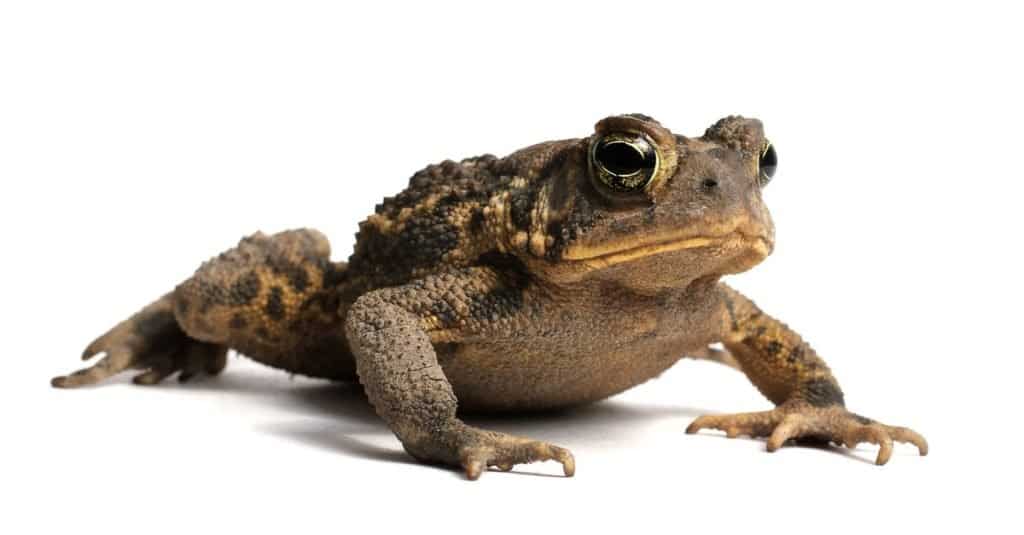Dogs do things that we humans don’t understand. They roll in our clean laundry, find something rotten and eat it, roll in something else rotten, and eat things that make them sick. While some of these things are harmless (if disgusting), others are potentially life-threatening.
Eating toads can easily fall into that last category.
Are All Toads Poisonous?
The truth is that most toads secrete toxins that make animals sick. While many frogs are safe to eat, most toads aren’t. True toads secrete toxins in their skin, making them unpalatable for animals, and some secrete life-threatening toxins. Some are more dangerous than others, but most toads fall into the hazardous and sometimes fatal category.
All true toads are members of the Bufonidae family. The members of this family secrete various forms of poisons that people generally call bufotoxin. This includes the cane toad (Rhinella marina), which is particularly nasty and frequently fatal if the poisoning isn’t treated promptly. This toad, in particular, has been the cause of many poisonings over the years. It’s native to Central and South America but was introduced to many Caribbean islands and parts of Australia. It’s also in parts of Texas, Louisiana, and Florida. This toad breeds prolifically and is considered invasive in most of the areas into which people introduced it.

Cane toads have spread to many parts of the world, including 3 U.S. states. Their toxin can cause severe illness and even death in dogs.
©Seregraff/Shutterstock.com
The cane toad isn’t the only one that causes illness and death, however. Here are a couple of others that can make your dog sick or worse.
- The Colorado River Toad (Incilius alvarius) secretes powerful psychoactive compounds. Many people have gotten themselves quite ill and needed a trip to the emergency room for treatment. Dogs fair the worst though, when they try to eat this toad (or even lick it!) they sometimes experience seizures and can die.
- The American toad (Anaxyrus americanus) in the Eastern United States and parts of Canada in some form. Most species of American toad secrete some form of bufotoxin. They vary in strength and composition, and as a result, vary in toxicity.
The Problem With Toads
So, obviously, you don’t want your dog to eat a toad. But what about sniffing and licking? Dogs are much like babies and explore their world through their mouths. We see this every time they smell something interesting while we’re out for a walk. They sniff, and not long after that is usually a lick or two.
Can we let our dogs have a little taste?
No. Absolutely not. Most toads taste awful anyway because it’s part of their defense against predators. Usually, dogs who have experienced the unpleasantness of a toad’s flavor avoid it. Of course, some dogs just don’t want to give it up. In those cases, it’s important to be aware of the symptoms of bufotoxin poisoning. Depending upon the type of toad and the degree of exposure your dog may exhibit:
- Frothing at the mouth or excessive drooling
- Cardiac abnormalities
- Difficulty breathing
- Seizures
- Head-shaking
- Pawing at the face
- Red-colored gums
- Staggering and stumbling
- Disorientation
- Vomiting
- Diarrhea
The toxins that toads secrete get absorbed very quickly through the mucous membranes in an animal’s mouth.
Quick action on your part could save his life.

American toads secrete varying amounts of the same toxin as cane toads, so you should
neverallow your dog to lick or eat them.
©Michiel de Wit/Shutterstock.com
I’m Pretty Sure My Dog Ate or Licked a Toad. What Do I Do?
Rinse his mouth with water, carefully, so that you don’t make poor Spot accidentally swallow the poison or inhale water. Alternatively, you can take a wet washcloth and wipe out his mouth thoroughly. This helps limit the amount of poison your dog ingests.
In all cases, if you suspect or know that your dog has mouthed or eaten a toad – call your veterinarian immediately.
The good news is that if you get treatment quickly, there’s a pretty good chance of survival. If your dog needs to be hospitalized, your veterinarian will likely administer intravenous fluids and medication to limit seizures and cardiac abnormalities. Most often, dogs begin to recover within about 24-72 hours of treatment.
An Ounce of Prevention Is Worth a Pound of Cure
Going forward, your best bet for prevention is a solid, well-practiced, constantly reinforced…“Leave it” cue. Teaching your dog that he shouldn’t eat whatever is on the ground without first checking with you will keep most of these things from happening.
However, if you have a slightly more stubborn or newly adopted dog, supervision and possibly leash-only outings may be your only option.
At the end of the day, our dogs are part of our families. It’s our responsibility to either teach or supervise our pups so they don’t get themselves into trouble.
The photo featured at the top of this post is © reptiles4all/Shutterstock.com
Ready to discover the top 10 cutest dog breeds in the entire world?
How about the fastest dogs, the largest dogs and those that are -- quite frankly -- just the kindest dogs on the planet? Each day, AZ Animals sends out lists just like this to our thousands of email subscribers. And the best part? It's FREE. Join today by entering your email below.
Thank you for reading! Have some feedback for us? Contact the AZ Animals editorial team.






